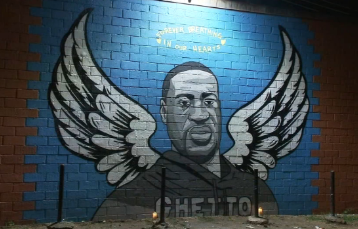Morgan Hanna
Street art is a widely popular form of artistic expression, brightening our bleak walls with colorful and unique displays. It isn't hard to find street art in urban settings, like downtown Seattle and Woodinville, but street art is also popular in small suburban areas, like our own town of Woodinville, where a mural has recently been painted on the wall outside of Jamba Juice and on the wall of MOD. No matter where you go, street art will likely be waiting to greet you. But where did this form of art come from?
While graffiti has been around for thousands of years, street art began to grow in popularity in the 1960s. Gangs in larger cities such as New York and Philadelphia would spray paint their names on the sides of buildings, trains cars, or wherever the public could see. The spraying of graffiti would act as a form of communication between gangs and members, whether it be to show respect or threaten violence. Considered the father of the modern graffiti movement, Darryl McCray, otherwise known as Cornbread, began the movement of non-gang related graffiti back in 1965. Since then, non-gang related street art has thrived, with a boom in popularity in the 1980s. Street art began to take on an activist and social justice approach in the later decades of the Cold War. Anti-war murals popped up across the world, with the Berlin Wall being covered head to toe with graffiti and anti-war messaging until it fell in 1989.
The 2020s have seen an implosion of social justice street art across the globe. The decade’s movement began with the murder of George Floyd on May 25, 2020. All across the world, from the US to Pakistan to Kenya to Syria, murals of Floyd’s image began popping up on walls, streets, and even on remains of destroyed buildings. Both George Floyd and Breonna Taylor, a woman murdered a few months prior to Floyd, have since been preserved on murals with other Black victims of police brutality from the past decades. 2020 also saw the rise of murals honoring first responders, healthcare workers, and essential employees who continued to work and risk their lives during the height of the Covid pandemic.
With the Russia-Ukraine war beginning in 2022, the walls of Ukraine and allied nations have seen a blossoming of pro-peace and pro-Ukraine murals, with many of said murals depicting the Ukrainian flag or peaceful blue and yellow images.
Since the original attack by Hamas on Israel on October 7, 2023, the world has also seen a boom in pro-Palestine murals, due to Israel's harsh and, in the eyes of many, borderline genocidal attack on the people of Palestine inGaza. In the early stages of Israel's occupation of Gaza, colleges across the US saw protests on campus, where students would spray paint Palestinian flags and messages on brick walkways, and sometimes on the walls of lecture halls.
Street art has and will continue to be the bright light on bleak buildings and dark times. Next time you travel to downtown Woodinville or Seattle, try to look for murals under bridges or on walls. Street art holds the words and the aspirations of the people, and it is no surprise that street art thrives in diverse civilizations and in times of political uncertainty. If you want to join in on the beauty of street art, then make sure that consent is given by the owner of whatever surface you want to use. Tagging the walls of businesses or other property without consent is considered vandalism, and can get you into serious trouble. Also, make sure your art does not infringe on copyright laws. The world can always use more color, and it is never too late to create your own works of magic and meaning.






